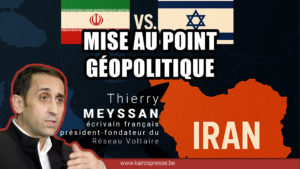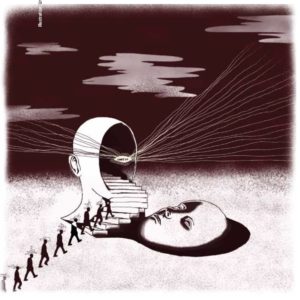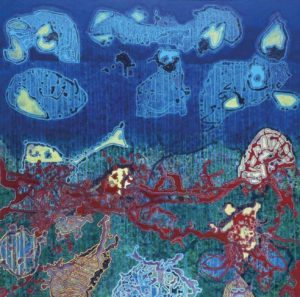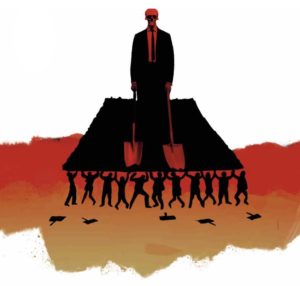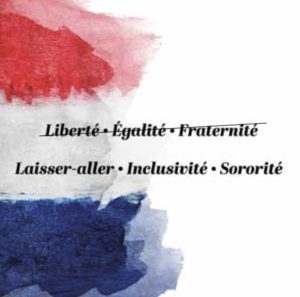Sur l’OCS, la Russie, la Chine, l’Inde, l’Iran et le Pakistan sont assis à la même table.
Boukhara La Noble, le «Dôme de l’Islam», dont l’histoire remonte à 2500 ans, recèle trop de merveilles pour être toutes citées : de l’Arche, vieille de deux millénaires, forteresse autour de laquelle la ville s’est développée, au minaret Kalon, haut de 48 mètres, construit en 1127, qui a tellement impressionné Gengis Khan qu’il a ordonné qu’il ne soit pas rasé.
L’élégante bande turquoise près du sommet du minaret est l’exemple le plus ancien de tuiles vernissées dans tout le Heartland.
Selon le Shanameh, l’épopée persane, le héros Siavach fonda la ville après avoir épousé la fille du voisin Afrasiab. Même avant l’ouverture des anciennes routes de la soie, Boukhara prospérait en tant que carrefour de caravanes, ses portes donnant sur Merv (dans l’actuel Turkménistan), Hérat (dans l’ouest de l’Afghanistan), Khiva et Samarcande.
L’apogée de Boukhara se situe aux IXe et Xe siècles, sous la dynastie samanide, lorsqu’elle devint un haut lieu de la culture et de la science persanes. C’est l’époque d’al Biruni, du poète Rudaki et bien sûr d’Avicenne : ils avaient tous accès au légendaire Trésor de la Sagesse, une bibliothèque qui, dans le monde islamique, n’a d’égale que la Maison de la Sagesse de Bagdad.
Boukhara a été en grande partie rasée par Gengis Khan et les Mongols en 1220 (oui : seul le minaret a été épargné). Lorsque le grand voyageur marocain Ibn Battuta s’y est rendu en 1333, la majeure partie de la ville était encore en ruines.
Mais en 1318, quelqu’un de très spécial est né à Kasri Orifon, un village situé à l’extérieur de Boukhara. Au début, il était simplement connu sous le nom de Mohammed, d’après son père et son grand-père, dont les origines remontaient à Hazrat Ali. Mais l’histoire a voulu que Mohammed devienne célèbre dans toutes les terres d’Islam sous le nom du saint soufi Bahâ’uddin Naqshband.
Que contient un nom ? Tout. Bahauddin signifie «la lumière de la religion» et Naqshband signifie «chasseur». Son éducation a été enrichie par plusieurs pirs («saints») et cheikhs vivant à Boukhara et dans ses environs. Il a passé presque toute sa vie dans ces oasis, très pauvre et comptant toujours sur son propre travail manuel, sans esclaves ni serviteurs.
Bahâ’uddin Naqshband a fini par fonder une tariqa – école islamique – très influente, basée sur un concept très simple : «Occupez votre cœur avec Allah et vos mains avec le travail». Ce concept a été développé en 11 autres règles, ou rashas («gouttes»).
Qu’est-ce qui sort de ces «cinq doigts» ?
La visite du complexe Bahâ’uddin Naqshband, à l’extérieur de Boukhara, centré autour de la tombe du saint soufi du XIVe siècle, qui est en fait le protecteur spirituel de la ville, est une expérience éclairante : une atmosphère si paisible enveloppe un réseau apaisant de pierres sacrées, d’«arbres à souhaits» et d’offrandes sacrificielles occasionnelles.
C’est l’essence même de ce que l’on pourrait définir comme un islam parallèle qui infuse sous tant de latitudes à travers le Heartland, combinant un passé animiste avec des enseignements islamiques formels.
Au complexe, nous rencontrons des dizaines de jolies femmes ouzbèkes vêtues de couleurs vives, originaires de toutes les régions, ainsi que des pèlerins venus de toute l’Asie centrale, mais aussi de l’Asie occidentale et méridionale. Le président ouzbek Mirziyoyev, extrêmement populaire, était ici à la fin de la semaine dernière, et il est arrivé directement de l’aéroport voisin, flambant neuf.
Cette oasis de paix et de méditation offre non seulement un contraste saisissant avec les turbulences toxiques de l’époque, mais nous incite également à rechercher la raison au milieu de la folie. Après tout, l’un des rashas de Naqshband affirme que «notre voie est la conversation, les bonnes actions ne se trouvent que dans la communication mutuelle, mais pas dans l’isolement».
Appliquons donc la sagesse soufie au prochain moment, peut-être révolutionnaire, qui devrait consolider la voie de la majorité mondiale vers un modèle de relations internationales plus équitable et moins dérangé : le 15ème sommet des BRICS qui se tiendra en Afrique du Sud la semaine prochaine.
Le ministre chinois des Affaires étrangères, Wang Yi, a inventé une définition concise qui incarne un mélange fascinant de confucianisme et de soufisme : «Les pays des BRICS sont comme cinq doigts : courts et longs s’ils sont étendus, mais un poing puissant s’ils sont serrés ensemble».
La façon de serrer ces doigts en un poing puissant a été le travail de quelques sherpas en préparation du sommet. Mais bientôt, il ne s’agira plus d’une question liée à un poing, mais à des poings, des bras, des jambes et, en fait, à tout un corps. C’est là qu’interviennent les BRICS+.
Parmi le réseau de nouvelles organisations multilatérales impliquées dans la préparation et la mise en œuvre d’un nouveau système de relations internationales, les BRICS sont désormais considérés comme la première plateforme du Sud mondial, ou de la Majorité mondiale, ou du «Globe mondial» (copyright Loukachenko).
Nous sommes encore loin de la transition vers un nouveau «système mondial» – pour citer Wallerstein – mais sans les BRICS, même les petits pas seraient impossibles.
L’Afrique du Sud scellera les premières coordonnées de l’expansion des BRICS+, qui pourrait se poursuivre indéfiniment. Après tout, de larges pans du «Globe mondial» ont déjà déclaré, officiellement (23 nations) et officieusement (d’innombrables «expressions d’intérêt», selon le ministère sud-africain des Affaires étrangères), qu’ils voulaient en faire partie.
La liste officielle – sujette à modification – des nations qui souhaitent faire partie des BRICS+ le plus rapidement possible est un véritable «who’s who» du Sud : Algérie, Arabie saoudite, Argentine, Bahreïn, Bangladesh, Biélorussie, Bolivie, Cuba, Égypte, Éthiopie, Honduras, Indonésie, Iran, Kazakhstan, Koweït, Maroc, Nigeria, État de Palestine, Sénégal, Thaïlande, Émirats arabes unis, Venezuela et Viêt Nam.
Et puis il y a l’Afrique : les «cinq doigts», par l’intermédiaire du président sud-africain Cyril Ramaphosa, ont invité pas moins de 67 dirigeants d’Afrique et du Sud à suivre les dialogues BRICS-Africa Outreach et BRICS+ Dialogues.
Tout cela indique ce qui serait le rasha clé des BRICS, pour évoquer Naqshband : l’inclusion totale de l’Afrique et du Sud – toutes les nations engagées dans des conversations profitables et également respectées dans l’affirmation de leur souveraineté.
Les Perses ripostent
On peut affirmer que l’Iran se trouve dans une position privilégiée pour devenir l’un des premiers membres des BRICS+. Téhéran jouit déjà d’un statut de partenaire stratégique avec la Russie et la Chine et est également un partenaire clé de l’Inde dans le corridor de transport international nord-sud (INSTC).
Le ministre iranien des Affaires étrangères, Hossein Amir-Abdollahian, a déjà déclaré que «le partenariat entre l’Iran et les BRICS a en fait déjà commencé dans certains domaines. Dans le domaine des transports, le corridor de transport nord-sud reliant l’Inde à la Russie via l’Iran fait en fait partie du projet de transport des BRICS».
Parallèlement aux avancées des BRICS+, les «cinq doigts» seront relativement prudents sur le front de la dédollarisation. Les sherpas ont déjà confirmé, officieusement, qu’il n’y aurait pas d’annonce officielle d’une nouvelle monnaie, mais davantage d’échanges bilatéraux et multilatéraux utilisant les propres monnaies des membres : pour l’instant, le fameux R5 (renminbi, rouble, real, roupie et rand).
Le dirigeant biélorusse Loukachenko, qui a inventé «Globe mondial» comme une devise aussi forte, sinon plus séduisante que «Sud mondial», a été le premier à évoquer un coup politique crucial qui pourrait avoir lieu plus tard, avec BRICS+ en vigueur : la fusion des BRICS et de l’Organisation de coopération de Shanghai (OCS).
Aujourd’hui, l’ancien ambassadeur sud-africain Kingsley Makhubela, ainsi que de nombreux diplomates et analystes du «Globe mondial», se font l’écho de Loukachenko en public : «À l’avenir, les BRICS et l’OCS devraient s’associer pour former une seule entité (…) Car il serait absurde que les BRICS et l’OCS fonctionnent en parallèle avec les mêmes membres».
Cela ne fait aucun doute. Les principaux moteurs des BRICS sont la Russie et la Chine, l’Inde étant légèrement moins influente pour un certain nombre de raisons complexes. Sur l’OCS, la Russie, la Chine, l’Inde, l’Iran et le Pakistan sont assis à la même table. L’accent mis sur l’Eurasie par l’OCS peut facilement être transposé dans les BRICS+. Les deux organisations sont centrées sur le «Globe mondial», elles s’orientent vers la multipolarité et, surtout, elles s’engagent à dédollariser sur tous les fronts.
Il est en effet possible d’avoir une lecture soufie de toutes ces plaques tectoniques géopolitiques et géoéconomiques en mouvement. Autant les promoteurs de «Diviser pour régner» et les chiens de guerre seraient désemparés en visitant le complexe Naqshband à l’extérieur de Boukhara, autant le «Globe mondial» pourrait trouver toutes les réponses qu’il cherche en s’engageant dans un processus de conversation et de respect mutuel.
Que ces âmes mondiales soient bénies et qu’elles puissent trouver la connaissance comme si elles revisitaient le trésor de sagesse de Boukhara au Xe siècle.
Pepe Escobar
Source : Strategic Culture Foundation
traduction Réseau International

